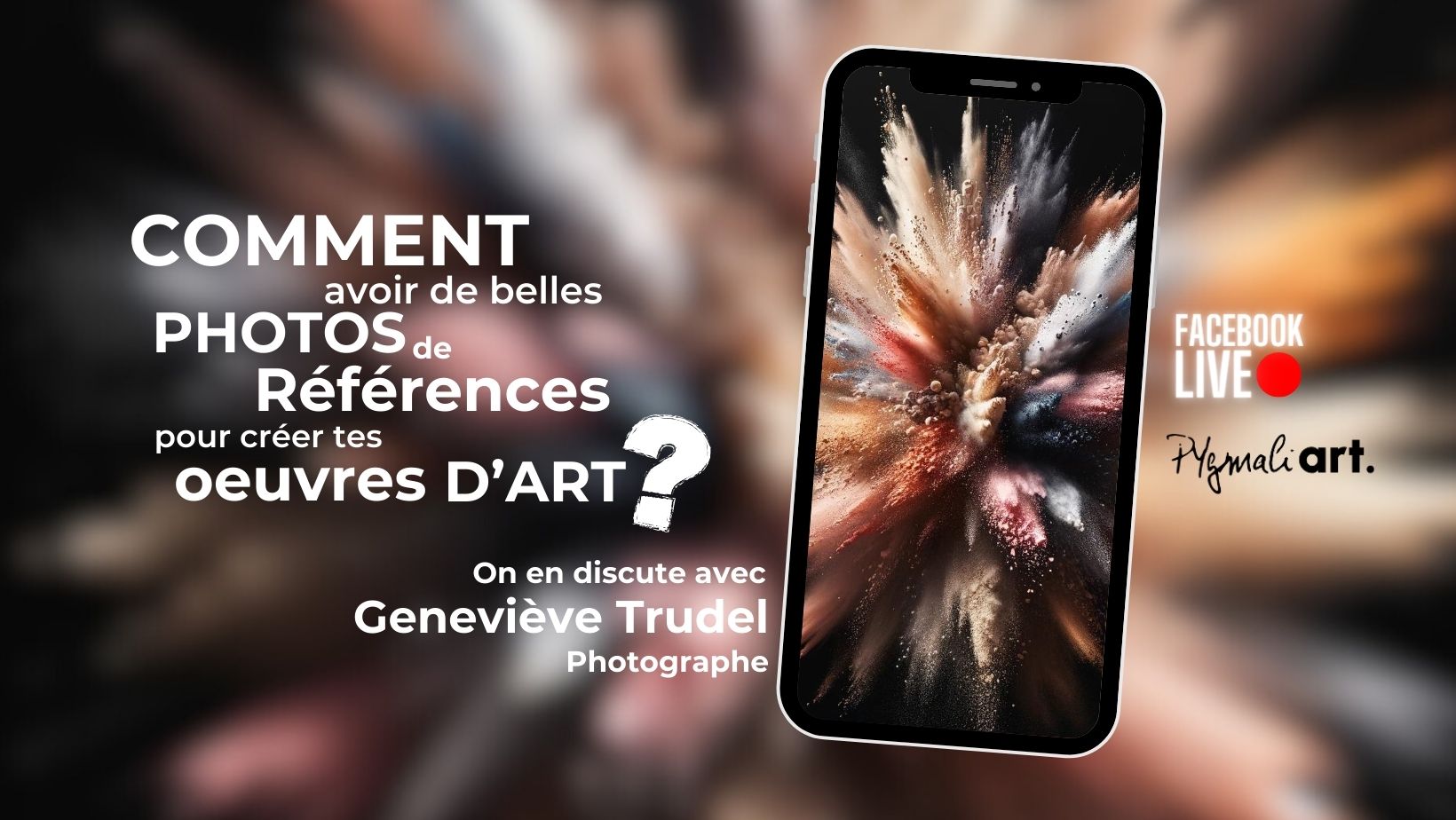
Optimizing Your Artwork with Quality Reference Photos: Tips from Geneviève Trudel
Welcome to the fascinating world of representational art, where the precision of your creative vision depends heavily on the tools at your disposal. Among these tools, reference photos occupy a prominent place. They are the canvas on which your ideas take shape, influencing the composition, details, colors and lighting of your creations. Inspired by a captivating interview with accomplished photographer Geneviève Trudel on our Facebook page, this article aims to explore the crucial importance of high-quality reference photos and provide proven strategies for capturing images that transcend your creative process.
The Importance of High Quality Reference Photos
Why Prioritize Quality Reference Photos?
The Impact of Quality on CreationThe first step in creating a successful piece of art is often selecting an adequate reference photo. A poor image can force the artist to compensate for the shortcomings, while a high-quality photo provides a solid foundation to build on. The key is to choose images that not only fit your artistic vision but also enhance key elements of your piece.
The Basics of a Good Reference PhotoAn effective reference photo should have a balanced composition, provide accurate details, capture colors accurately, and capture light properly. These criteria ensure that the final work is a faithful and innovative representation of the initial inspiration. It is important to take the time to choose or capture that perfect image before you begin your project.
Key Elements of a Good Reference Photo
-
Composition: Composition guides the eye through the work, structuring the image in a way that supports the artistic intention.
-
Clarity and Detail: A high level of clarity and detail enriches the work, allowing for an accurate and nuanced representation.
-
Colors: Color accuracy is essential to ensure that the captured shades match reality and support the mood of the artwork.
-
Light: Lighting should not only reveal the subject, but also contribute to the overall mood, depth and texture of the work.
The Influence of Light on Your Reference Photos
The Luminous Balance
Lighting is a critical element in the quality of reference photos. Proper light management can bring out colors and depth, adding an extra dimension to your art. Geneviève Trudel emphasizes the importance of balancing light sources to avoid harsh shadows and unwanted reflections. Whether in portraiture or wildlife photography, natural light is often preferred, although properly managed artificial lighting can also produce excellent results.
Lighting Optimization
Genevieve also emphasizes the importance of the orientation of the light in relation to the subject. A simple technique, consisting of observing the shadow and light on the back of one's own hand while rotating on oneself, can help determine the best position to highlight the subject in the best possible light.
The “Safe Shot” Trick
In a world where technology offers endless possibilities to alter and enhance our images, Geneviève Trudel reminds us of the importance of simplicity with the “Safe Shot” trick. Before diving into experimenting with filters and effects, taking a raw, unedited base photo ensures that you have a faithful and reliable starting point for your work. This practice allows you to maintain an authentic reference that you can always return to, ensuring that your creativity is expressed on a solid and truthful foundation.
Capturing high-quality reference photos is an essential skill for any representational artist. By following Geneviève Trudel’s advice, you can significantly improve the quality of your artwork by ensuring your starting images are optimal. For a deeper dive into these techniques and to discover other tips shared by Geneviève, we invite you to watch our full interview on YouTube. It’s a valuable resource for anyone looking to refine their approach to reference photography and explore new ways to enrich their art.
Watch our interview with Geneviève Trudel on YouTube for more tips and inspiration.
Mastering your reference photos is the first step toward creating art that not only captivates the eye but also touches the soul. Embark on this creative journey with expert guidance and discover where your art can take you.





Leave a comment